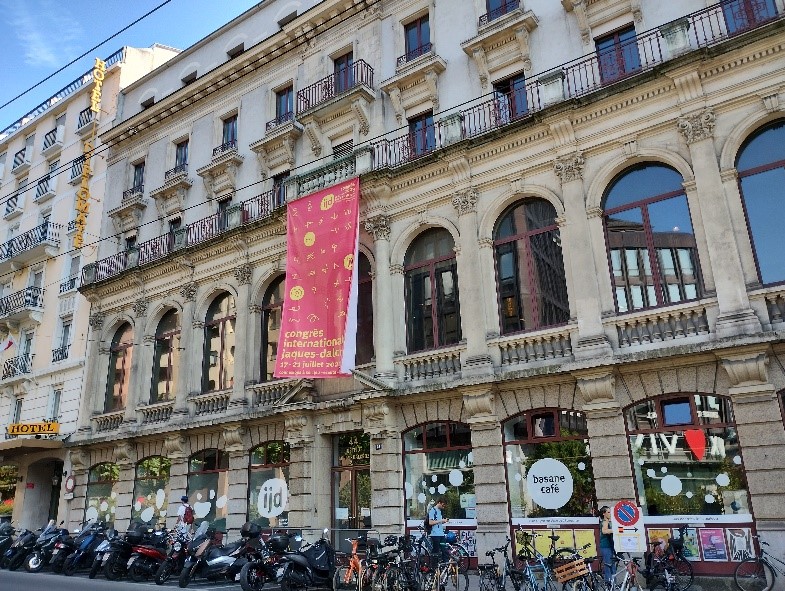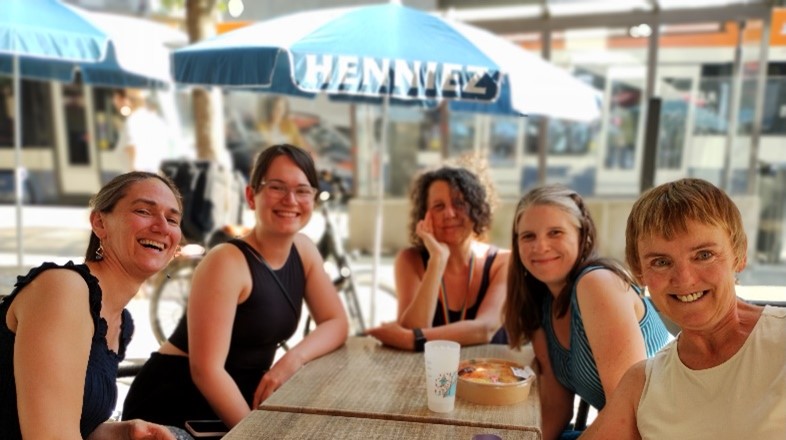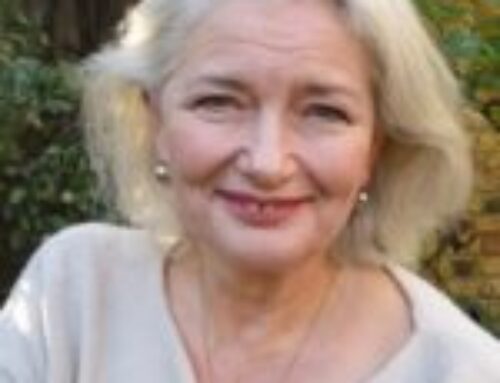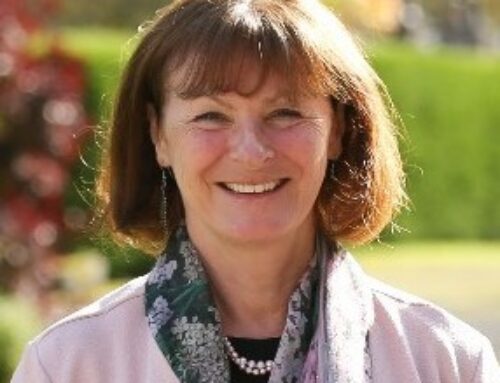
The Institut Jaques-Dalcroze – Photo by Kaye Barker
For those relatively new to Dalcroze, the Institut Jaques-Dalcroze, in Geneva, Switzerland, is the world centre for Dalcroze Eurhythmics and was founded by Emile Jaques-Dalcroze in 1915
The Institute is a large building full of wonderful facilities. There are studios with sprung floors and in each are cupboards full of Dalcroze equipment. In addition, each space harbours an expensive piano. Recorded music can be easily played whether on Spotify, CD or straight from a laptop. On the top two floors of the Institute are plenty of smaller practice rooms: some have three pianos giving harmony and improvisation lessons a myriad of pedagogical options. In the basement of the building is a recital room and further practice rooms and on the ground floor one can find the library while the administrative offices are situated on the third floor. The first floor is home to the Salle de Spectacle. This is room 101 (ironically named for some!) and is the principle performance space of the Institute with raked seating, lighting and a large space for lessons and concerts.
The Congress takes place once every four years so the previous one dates from July 2019. I think most participants were keenly aware of the events that had taken place in between the two events!
So, what is the Congress and what happens? It is the largest gathering of Dalcroze Eurhythmics teachers and participants in the world. All Diplômé/es are invited to teach a total of three classes and can choose between rhythmics, rhythmics -solfège or to present a paper. Teachers can also offer improvisation classes during the lunch break which participants have to book separately from the main conference. So – it is a gathering of some of the most experienced and fêted Dalcroze Eurhythmics teachers in the world.
There were around 300 participants in 2023 and about 40 Diplômé/es taught classes and/or offered presentations. We had to sign up in advance and those of the better-known teachers were booked up very quickly. As a new Diplômée it was both exciting, daunting and an honour to be teaching alongside people I’d deeply admired for years. The most enjoyable aspect of the week, however, was experiencing the sessions of a wide range of teachers. Every lesson was delivered in its own unique style, and it was simply a privilege to be able to immerse oneself in the method and to have the opportunity to learn from others. The mornings were devoted to rhythmics and rhythmic- solfège classes and the afternoons to presentations. There were activities and performances laid on each evening.
I would encourage you to look at the ijd’s website. Each year they have Visitor’s Weeks which usually correspond to the UK’s half terms. This is an opportunity for visitors to come along and watch lessons and performances. I highly recommend this if you can’t wait until the next Congress!
There was a small delegation from the UK who attended the Congress. The Diplômé/es were Dr Karin Greenhead, Andrew Davidson, Bethan Habron-James and me. Sadly, Jacqueline Vann was unable to be with us. Kathryn Kay, Mary Price-O’Connor and Helen Liddle were UK Congress participants and we all agreed that in 2027 we should encourage a larger group to make the journey to Geneva. See you there!





